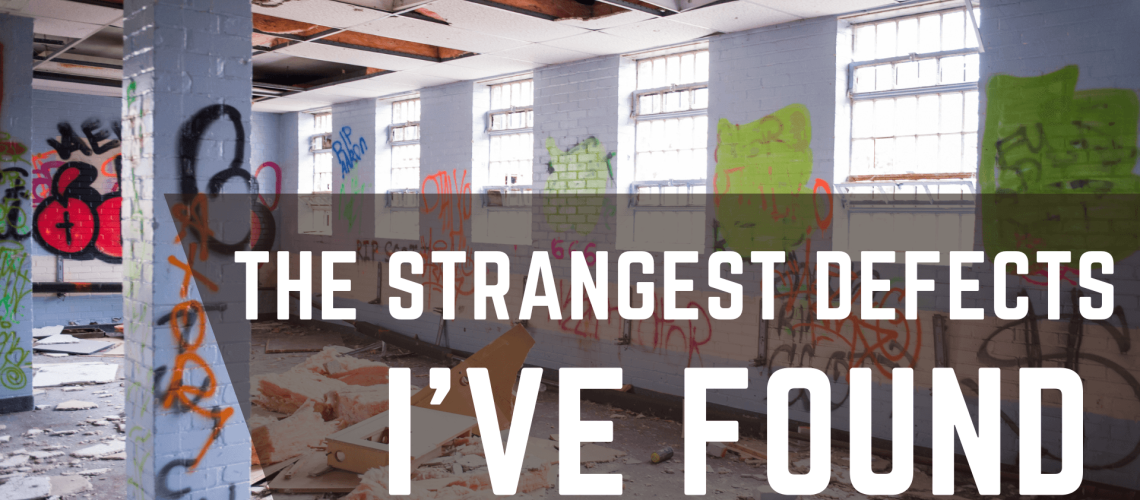After inspecting hundreds of homes across West Tennessee, I’ve learned one thing for sure — you never know what you’re going to find when you open an attic hatch, crawl under a house, or pull the cover off an electrical panel.
Every home has its surprises, but some stick with you. Some are funny, some are frustrating, and some are downright dangerous. Here are a few of the strangest things I’ve come across during inspections — and what they can teach homeowners and buyers about what’s really happening behind the walls.
1. The “Creative” Plumbing Solutions
Every inspector eventually runs into plumbing that tells a story — usually one involving a weekend project that got out of hand.
I once inspected a home in Bartlett where the previous owner had used flexible dryer vent hose as a drain line under the kitchen sink. It actually carried water (for a while), but it wasn’t long before corrosion and leaks set in. Another home had PVC pipes joined together with duct tape and zip ties — no glue in sight.
These kinds of “repairs” might seem clever in the moment, but they always fail over time. Plumbing systems need proper fittings, slope, and material compatibility to stay leak-free.
Lesson learned: When it comes to plumbing, shortcuts are slow leaks waiting to happen.
2. The Hidden Room in the Attic
In a 1970s home in Germantown, I found an attic space that had been walled off with drywall and carpeted — complete with a light fixture and a folding chair. There was no ventilation, insulation, or fire barrier. It was clearly someone’s secret hangout spot years ago.
While it made for a good story, it was also a fire hazard and a potential cause of attic condensation and roof damage. Any enclosed attic space must be properly ventilated and insulated to avoid moisture buildup.
Lesson learned: Every “extra room” needs to meet the same safety and building standards as the rest of the home.
3. The Electrical Octopus
In one Collierville garage, I found an extension cord that had been split into five smaller cords feeding outlets, lights, and even a refrigerator. Someone had used electrical tape and spare wire to make their own “distribution system.”
Not only was it unsafe, it was a serious fire risk. Electrical connections must be made inside approved junction boxes with proper wire nuts, not freehanded with tape and hope.
Lesson learned: If it looks improvised, it probably is — and it’s probably dangerous.
4. The Crawlspace Creature Feature
Crawlspaces are a world of their own. I’ve met snakes, raccoons, and once — an entire family of possums under a den addition in Somerville. They had chewed through insulation and nested in old ductwork.
Besides the unpleasant surprise, wildlife intrusion can lead to air quality problems, insulation damage, and contaminated soil.
Lesson learned: Always keep foundation vents screened and access doors sealed tight. You never know who might move in when you’re not looking.
5. The Vanishing Support Beam
During an inspection in Bolivar, I crawled into a foundation space and noticed one of the main support beams simply… stopped. A few feet of the span were resting on stacked bricks and an old cinder block turned sideways.
The homeowners had noticed some floor sagging but never realized the underlying issue. Over time, moisture and settling had compromised the structure.
Lesson learned: Foundation and framing problems rarely show up overnight — but they always start somewhere small. Regular inspections catch those issues early.
6. The “Decorative” Smoke Alarm
In one home near Arlington, a smoke alarm was painted over so many times it had become part of the ceiling. When I tested it, it didn’t make a sound.
Paint and dust can block sensors, and any alarm more than ten years old should be replaced.
Lesson learned: Safety devices aren’t décor — test and replace them regularly.
7. The Attic Rainforest
One of the most memorable inspections was a home with condensation dripping from every roof truss. It looked like it was raining indoors. The cause? The homeowners had sealed off all attic vents “to keep the heat in.”
Without ventilation, moisture from inside the house had nowhere to go. It condensed on the cold roof sheathing, eventually leading to mold and wood decay.
Lesson learned: Ventilation is vital — an attic needs to breathe.
You Never Stop Learning in This Job
Every inspection teaches me something new. Some homes are nearly flawless, and others are full of surprises. But the truth is, most problems — even the strange ones — come down to the same thing: deferred maintenance, unpermitted work, or a lack of understanding about how houses function.
That’s why I love this profession. Every day, I get to solve mysteries, teach homeowners how their systems work, and help buyers make informed decisions.
And sometimes, I get a good story to tell afterward.
📞 Schedule Your Home Inspection in West Tennessee
Serving Memphis, Bartlett, Collierville, Germantown, and surrounding communities, Upchurch Inspection provides certified home and commercial inspections, mold testing, radon testing, water quality testing, and sewer scope inspections.
📞 Call (901) 350-8885 or visit UpchurchInspection.com to schedule your next inspection.


